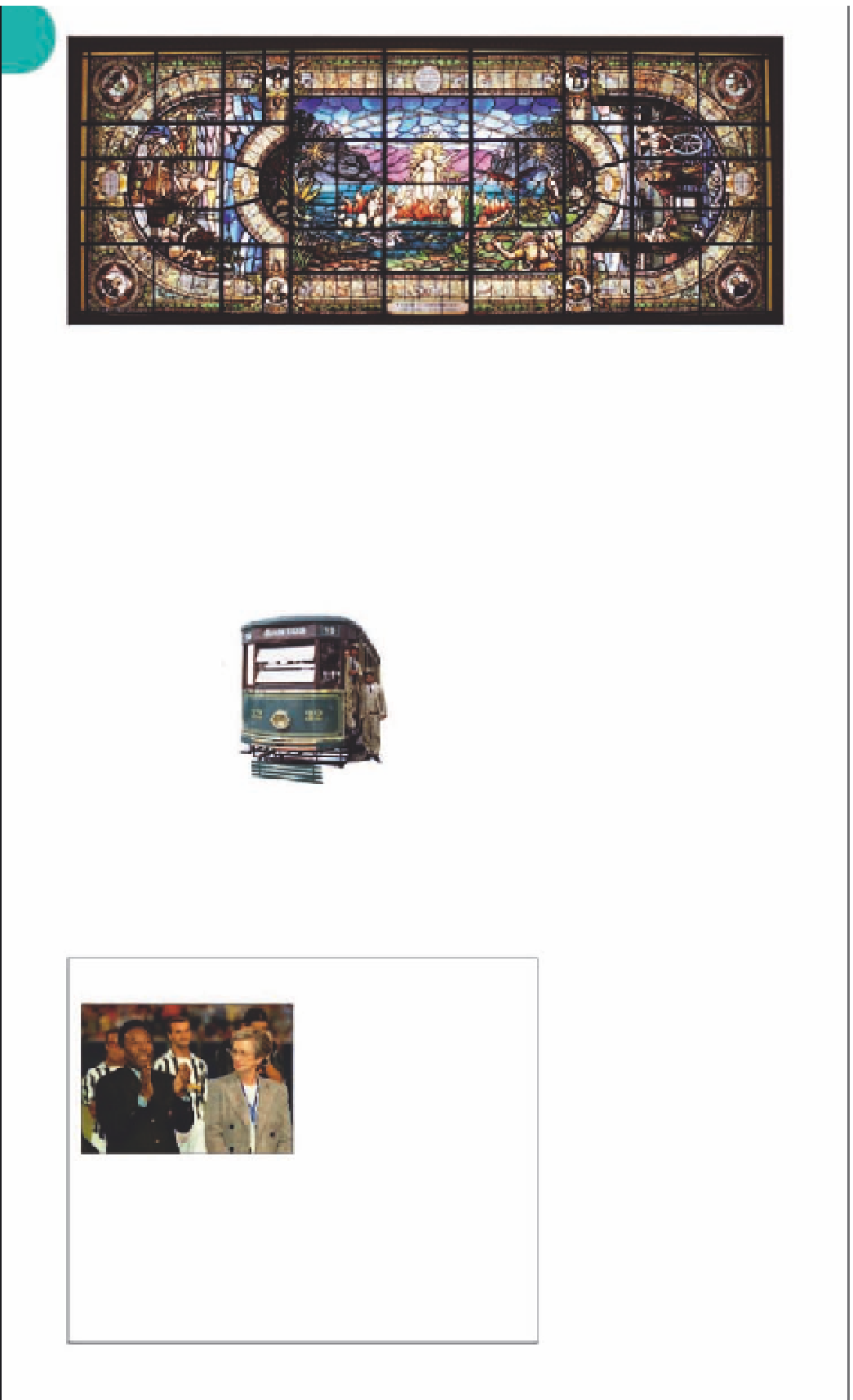Travel Reference
In-Depth Information
Stained-glass skylight, depicting a representation of Brazil, the
Mãe Douro
, Bolsa e Museu do Café, Santos
Santos
5
*
418,000.
@
n
Setur, Largo
Marques de Monte Alegre, (013)
3201 8000.
www
.santos.sp.gov.br
center is undergoing a spruce-
up and is now very attractive.
Scottish trams in British racing
green run through its streets,
taking visitors on a whistle-
stop tour of the various
attractions. The city center is
also small enough to stroll
around and have a closer
look at these sights on foot.
The jewel in the city's crown
is the Art Nouveau
Bolsa e
Museu do Café
. Its
modest Victorian
exterior hides an
opulent marble-
floored turn-of-the-
19th-century stock
exchange and
museum, together
with a café shop
serving excellent
coffee and desserts.
The Bolsa was once
open only to wealthy (and
exclusively male) coffee
barons who traded here.
When it was built, coffee was
the most important and
coveted commodity in Brazil.
The auction room is crowned
by a magnificent stained-glass
skylight, with an arresting
representation of Brazil, the
Mãe Douro
; crowned with a
star and rising from flames
in a landscape thick with
tropical animals and startled-
looking indigenous people.
The skylight and the beautiful
Neo-Renaissance painting of
Santos that adorns the walls
of the stock exchange are by
Brazil's most celebrated mid-
19th-century artist, Benedito
Calixto
(see p30)
.
A number of Calixto's
paintings are displyed in the
Fundação Pinacoteca Benedito
Calixto
, which is housed in
one of the few remaining
coffee baron mansions. The
landscapes shown here give
an idea of the city's once
breathtaking natural beauty.
Santos has a handful of
interesting churches, but the
only one open to the public
is the
Santuário Santo
Antônio do Valongo
. The
church's mock-Baroque
interior dates from the 1930s.
The fine original 17th-century
altarpiece remains preserved
in the Franciscan chapel to
the left of the main entrance.
The statue of Christ is
particularly striking. Next
door to the church is the
British-built terminus of
the now defunct Santos-São
Paulo railway. Built between
1860 and 1867, the station
is vaguely reminiscent of
London's Victoria.
The once-filthy city beaches
are now much cleaner and
are lively with bustling
bazaars, and people playing
volleyball and football,
every evening and weekend.
When Santos was founded in
1535, it was one of Portugal's
first New World settlements.
Since the mid-16th century,
when neighboring São
Vicente was established,
Santos had been a
port. First it dealt with
sugar, and then with
African slaves.
However, it grew rich
on coffee, which was
brought out of the
mountains on Brazil's
first trains, built by
the British in the late
19th century.
Unlike São Vicente,
Santos has preserved vestiges
of its historical legacy, and
under recent enlightened
municipal governance, is
reinventing and refurbishing
itself. Once decrepit, the city
Scottish tram
FOOTBALL LEGEND PELÉ
Regarded as the world's most
famous sportsman, Pelé was
born in Tres Corações, Minas
Gerais. He started his career
in Santos when, in 1956, the
Santos Futebol Clube signed
him. Soon, he was offered a
place in the Brazilian national
team, and went on to play in
three of Brazil's five World
Cup winning teams. Since his
retirement in 1977, Pelé has worked as a charity patron
Goodwill Ambassador for UNICEF. In 1992, he became the
UN Ambassador for Ecology and Environment. In 1995, he
was appointed Minister of Sports, a post he resigned after
becoming caught up in one of the rumored, or real,
corruption scandals that blight Brazilian politics.
Pelé during Champions World
Series 2003, New York
For hotels and restaurants in this region see p375 and p401





































